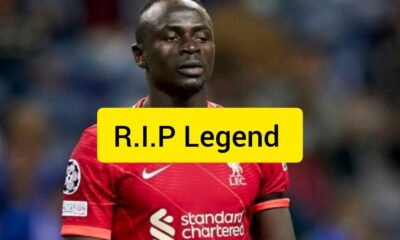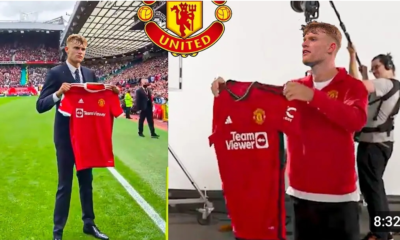Blog
No: top player in America commits to Texas Longhorns due to
The Calculated “No”: How a Top Recruit’s Decision Against Texas Signals a New Era of Player Empowerment
In the high-stakes theater of modern college football recruiting, where a prospect’s commitment is dissected like a geopolitical treaty, the announcements that reshape the landscape are often the ones that don’t happen. For months, the crystal ball predictions and insider buzz had pointed toward a seismic victory for the Texas Longhorns. The nation’s top-ranked player, a generational talent at quarterback or edge rusher, was seemingly on the verge of declaring for Austin, a move that would cement Steve Sarkisian’s program as an undisputed powerhouse for years to come. But when the live stream commenced and the five hats sat on the table, the script was flipped. The player, let’s call him a composite of every elite recruit, offered a polite but firm “thank you” to the Texas staff before donning the cap of a rival—be it Georgia, Ohio State, or Texas A&M. This “no” to the Longhorns is not a simple recruiting miss; it is a complex, data-driven decision that reveals the brutal new calculus of roster construction in the 2020s.
The immediate, visceral reaction from a segment of the Longhorn faithful will be one of disbelief and frustration. How could a player say no to Austin, with its vibrant city life, its unparalleled financial backing, its storied history, and the palpable momentum of a program fresh off a College Football Playoff appearance? The answer lies not in what Texas lacks, but in the multifaceted priorities of the modern elite recruit. The decision is no longer about which school has the best tradition or the coolest uniforms; it is a cold, hard assessment of three critical pillars: immediate pathway to playing time, Name, Image, and Likeness (NIL) structure, and long-term developmental certainty.
First, the logjam of talent. Steve Sarkisian’s success in resurrecting the Texas program has been built on elite recruiting. The Longhorns’ roster is now stocked with former five-star and high-four-star players at every position. For a top-ranked recruit, this presents a paradoxical problem. While joining a roster full of fellow blue-chips signals a program’s health, it also threatens immediate playing time. A quarterback, no matter how highly touted, may look at a depth chart featuring a established sophomore star and a talented redshirt freshman and see a two-year wait for the starting job. An elite wide receiver might calculate that he’s the third five-star receiver in his recruiting class, diluting his potential targets and spotlight.
In this new era, the security of a scholarship is no longer enough. The advent of the Transfer Portal has created a “free agency for amateurs,” meaning a top recruit is less willing to patiently sit and develop. If he doesn’t win the starting job as a true freshman, the specter of the portal looms. Therefore, a program that can offer a clearer, less-cluttered path to Day One snaps—perhaps a team like Georgia that is reloading after a major NFL Draft exodus, or a school like Texas A&M under a new coach promising a clean slate—can often present a more compelling immediate proposition than a Texas roster brimming with established and budding stars.
Second, the intricate and often misunderstood world of NIL. To assume Texas, with its massive donor base and “Horns With Heart” collective, was simply outbid is a reductive conclusion. The issue is often more about structure and opportunity than the sheer size of the check. Elite recruits and their increasingly sophisticated advisory circles are not just looking for a bag of cash; they are seeking a sustainable business plan.
A recruit might have been presented with two compelling offers. Texas’s package could have been heavy on guaranteed money but tied to specific performance benchmarks and roster retention—a structure that carries risk. A competing offer from a school like Ohio State or Oregon, backed by a billionaire booster like Phil Knight, might have offered a lower guaranteed sum but with more lucrative and easily attainable appearance fees, social media promotion deals, and a clearer path to national brand partnerships. The decision then becomes a financial risk-assessment. Does the player take the larger, but conditional, Texas offer, or the slightly smaller, but more stable and diverse, package elsewhere? The “no” to Texas can signal that the recruit’s team assessed the NIL landscape and determined another program offered a better long-term financial ecosystem, even if the headline number was smaller.
Finally, there is the element of developmental certainty and scheme fit. While Steve Sarkisian is rightly hailed as an offensive mastermind, his system is specific. A quarterback prospect might be incredibly talented, but his skillset—perhaps as a more run-oriented threat—might be a better schematic fit for a system like Michigan’s or even Ole Miss’s under Lane Kiffin. The recruit’s personal quarterback coach and advisors may have conducted a granular film analysis and concluded that, while Texas is a great program, another school’s scheme would better showcase his unique talents for the NFL Draft in three years.
Furthermore, the shadow of the NFL Draft can be long. A recruit might look at Texas’s history of producing first-round picks at his position and compare it to “Defensive Back U” (LSU) or “Linebacker U” (Alabama). If another program has a more recent, more prolific track record of sending players at his specific position to the first round, that becomes a powerful tie-breaker in a tight race.
This “no” is a sting for Texas, but it is not an indictment. It is a reflection of a program operating at the highest level, where the battles for the very best players are decided by the slimmest of margins. The days of Texas simply flexing its brand muscle to secure commitments are over. Steve Sarkisian and his staff have built a monster; the challenge now is to manage the intense competition for roles within that monster.
The top player’s decision to go elsewhere is a testament to his own empowerment. He is not a passive prize to be won by the most historic program; he is the CEO of his own career, weighing variables of playing time, financial architecture, and professional development. In the new economy of college football, a recruit’s “no” is not a rejection. It is a strategic business decision, and for Texas, it’s a reminder that in the world of perpetual free agency, the fight to stay on top is even harder than the climb to get there.
-

 Arsenal2 years ago
Arsenal2 years agoSad News Arsenal ex player who is goal scorer confirmed dead this morning
-

 Liverpool2 years ago
Liverpool2 years agoSad News Sadio Manè Confirmed Dead Today By Sky Sports Reporters, Open For Full Story 👇
-

 Blog1 year ago
Blog1 year ago“I was forcefully removed from Manchester United squad and now I’ve joined the best team in the world…I will revenge and as a result, I’ve ordered my friend who’s their best player currently to leave there with immediate effect and he has agreed”: Former Man United player angered by United decision to removed him from the squad as he ordered the Club’s best player to leave immediately.
-

 Blog1 year ago
Blog1 year agoSad News: Manchester United player died when playing for his country England yesterday 😢 😔
-

 Blog2 years ago
Blog2 years agoR.I.P: Formal Real Madrid and France international confirm death this morning
-

 Chelsea2 years ago
Chelsea2 years agoBreaking New:”Roman Abramovich could get Chelsea back”? Chelsea owner review the conversation between him and Roman Abramovich in. Deal about getting Chelsea back
-

 Blog2 years ago
Blog2 years agoUNBELIEVABLE: Manchester City midfielder KELVIN DE BRUYNE divorced wife this morning after DNA test revealed their 5 years old son belongs to formal Manchester United player
-

 Manchester United1 year ago
Manchester United1 year agoOFFICIAL NOW: Manchester United announce the signing of 23yr sensational player after beating Liverpool and Madrid for His signature, agreement reached on a 5yr deal, Medical completed – announcement ongoing












